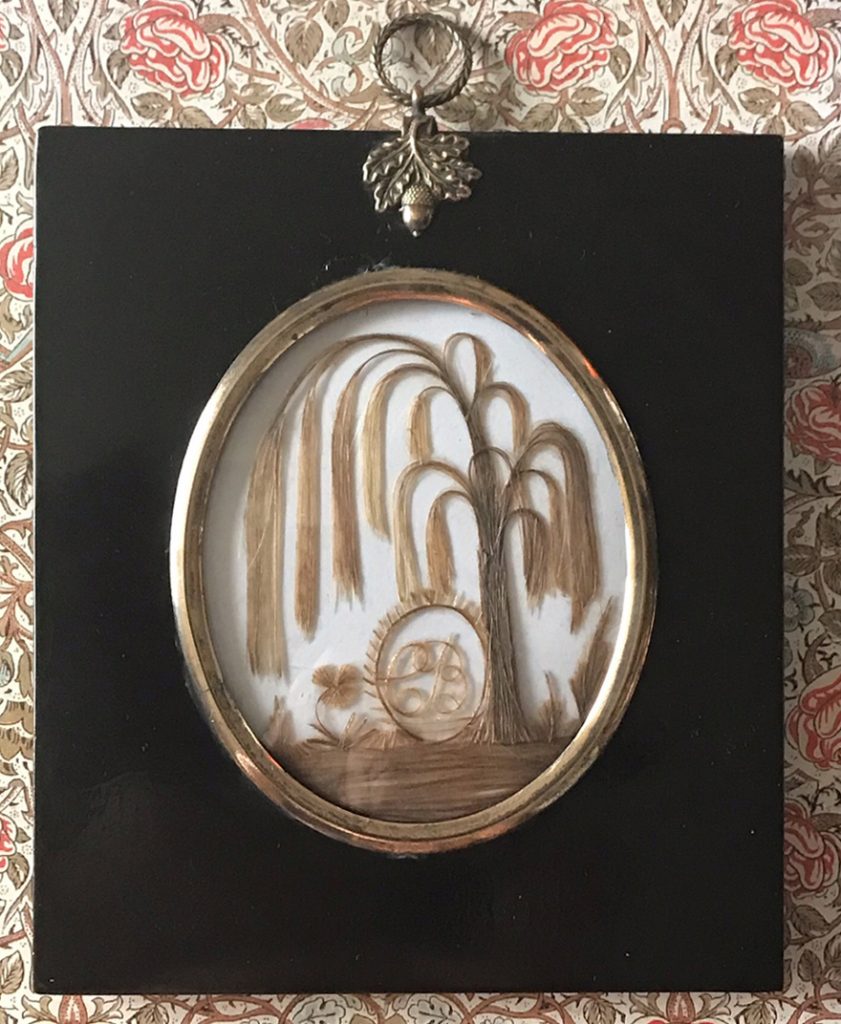
Portrait miniatures, silhouettes, portraits & an omnium-gatherum of historical interest & character.
Enquiries and orders
Weeping Willow
Memorial Hair Work
Sold
From the eighteenth century onwards, hair was popularly used in jewellery and pictures as a manifestation of sentiment, be it love or grief. In death a loved one’s hair took on added significance and, by having it fashioned into a symbolic motif, was a way to hold them close forever more.
Mourning pieces created from hair are frequently to be found on the reverse of portrait miniatures so standalone pieces are more unusual though nonetheless poignant. This example shows a weeping willow tree, the traditional symbol of sorrow, together with a pansy to represent loving feelings. Held between these are the loved one’s initials CB in monogram. Two shades of hair have been intermingled within the picture suggesting a husband and wife connection.
Pieces like this were often commissioned specially from a professional hair worker, such as Elizabeth Chilcot who worked at her father’s jewellery shop in Bath during the 1770s. Elizabeth offered portraits and landscapes in chopped hair as well as pieces with urns, altars and trees for mourning miniatures. She was proclaimed ‘a genius far superior to any who ever yet attempted that ingenious art’. It was without doubt a slow and time-consuming task as reflected by her fee of £3 3s (equating to about £500 in today’s money) for a portrait worked in hair.
The hair in this piece is mounted on flat glass covered with a second piece of glass and backed with card within what appears to be the original papier-mâché frame with an acorn hanger. The backing card has been replaced to enhance the visual contrast of the hairwork. The original backing, now browned with age, has though been retained within the piece.
Item Ref. 6966
Size: framed, 141 x 122mm (5½ x 4¾")